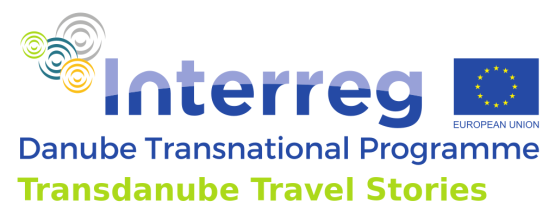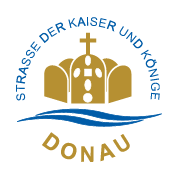Who wants to understand Europe, must travel the Danube
Who wants to understand Europe, must travel the Danube
Without the claim to explore and understand the Danube region, the whole of Europe will never be understood either. With the narrative of a "Europe on the Danube", a multi-day expedition to the probably most famous river of the continent starts, which wants to answer the question, what constitutes this "other Europe" on the Danube. We want to understand how people think, see, feel and taste there. We are in search of the characteristics of the Danube European and get to know concrete places, events, people and stories.
Our route from Linz to Novi Sad and Timişoara reveals a "liquid space" in constant flux. It has been moving between Occident and Orient for many centuries. Here, the aftershocks of the recent political upheavals of the Wende era are still palpable. The wounds and traces of fascism and communism continue to have an effect on societies and urban architecture. On the other hand, surprising technological innovations and artistic creativity form a sharp contrast to the flowing history. The rich cultural diversity makes Danube Europe a unique region in the world.
Pendulum between East and West
The Middle Danube Region has been "moving" back and forth for centuries like a pendulum or ferry between the powers and influences of the Occident (e.g. Christianity, Euro-Atlantic cooperation) and the Orient (e.g. Ottoman Empire, Soviet Union), thus forming a fluid transition, a "liquid space" between East and West.
Esztergom - A commitment to the West: This small town is a symbolic place of commitment to the Western Christian world in Hungary. The huge domed basilica is enthroned directly on the river and is a sacred place for Hungarians. It is the birthplace of the state's founder, King Stephen the First (the Saint). His coronation also took place here, which is to be equated with the clear directional decision of the Hungarians coming from the East for the Western Christian culture.
Visegrád - Central European alliance with vision: In 1991, the Visegrád Group was formed here, which today includes Poland, the Czech Republic, Slovakia and Hungary. The cooperation dates back to a summit meeting of the Polish, Bohemian and Hungarian kings in 1335. Visegrád Castle offers a magnificent panorama of the Danube bend - a perfect place to learn more about the V4 and reflect on its future role.
Budapest and Pécs - In Ottoman footsteps: In the Middle Ages, Hungary was torn into three parts, and two thirds were occupied by the Ottoman Empire. The pendulum now swung towards the Orient - the mosques still standing today in Pécs and the remains of the Turkish baths in Budapest bear witness to this.
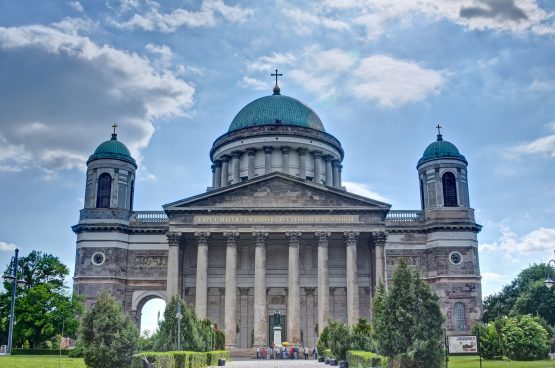
Around 1989, the directional decision for the Western democratic world order was clear, and today, with the exception of Serbia, all countries in our route are members of the EU. This affiliation cannot be shaken, even if in recent years there has been much discussion about Europe as a value system or, currently, about Russia's influence. In order to better understand these discourses, one must first understand the centuries-long pendulum movement between Orient and Occident.
The metaphor of the pendulum can also be applied to the movement of people: for centuries, they have moved voluntarily and involuntarily (land seizures, settlement, flight, expulsion, emigration, guest labor). These transfers also took place sometimes from West to East (e.g. Danube Swabians, Saxons), sometimes vice versa (e.g. guest workers from former Yugoslavia, refugees from the Balkans or currently from Ukraine). In the last two-three decades, these movements have also been associated with the terms "brain drain" (from East to West), and technology transfer and investment (from West to East).
Upheaval and transformation
Danube Europe means ongoing urban and social change: one quickly gets the impression that neither societies nor cities ever come to rest. Everything is being restructured, reorganized and rebuilt. Cities like Linz, Bratislava, Győr or Novi Sad cannot be compared at all with the conditions of 30 years ago. A particularly vivid example of systematic social-urban change is provided by a Danube city located far from the former Iron Curtain: Linz.
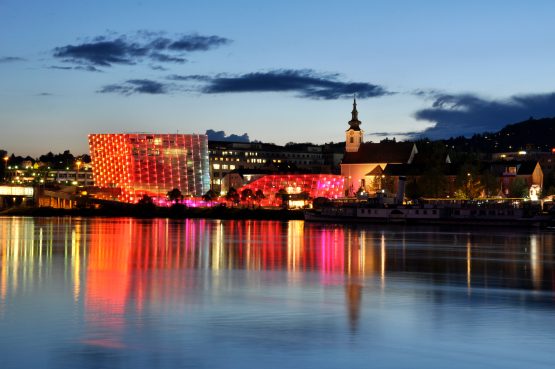
Linz - From the "Führer's" Capital of Culture to the European Capital of Culture: the former gray industrial city became a European place of innovation. The former favorite city of the "Führer" actually became the Capital of Culture in 2009 - albeit under completely different auspices - and was allowed to tell its story to all of Europe. The cultural year opened with the exhibition "Cultural Capital of the Führer" and caused controversy. But Linz (has) changed and today stands for creativity and networking, yet remains excitingly rich in contrast. With the Lentos Museum of Art and the Ars Electronica Center, two famous institutions define the Danube embankment, representing the city's new profile in the best possible way.
Ups and downs of the 20th century
The Danube is that river on which Europe's fate has always been decided. In other words: If these events had taken place differently, Europe would be a different continent today. The history of this area has always moved between great strokes of fate and glorious moments of European history, which still have an effect today. However, despite all the heroic deeds and the love of freedom, the impression of an overall tragic history prevails, which has left some traumas and many cemeteries. This tragedy is often successfully resolved in the cultures of the Danube region through humor, wit, (self-)irony and sarcasm.
The events of the 20th century in particular have left deep traces and wounds that societies and peoples along the Danube have not always been able to deal with. Revolutions, wars, fascism and communism have blurred the lines between perpetrators and victims in an unfortunate way, too many people are personally affected to this day, while some political parties try to make their political capital out of the issues of history.
Sopron - European Picnic at the Gateway to Freedom: The international bicycle route Iron Curtain Trail - EuroVelo 13 leads along the Iron Curtain, which divided Europe into East and West for half a century. The site of the so-called Pan-European Picnic in 1989 near Sopron, located on the Austro-Hungarian border, is now a bearer of the European Heritage Label. It commemorates a turning point of the historical transformation year 1989. During the peace demonstration, about 700 GDR refugees crossed a border gate into Austria.
https://de.eurovelo.com/ev13/hungary
"Liberland" - A fun republic as a warning: This crypto-state is a small piece of Danube land between Croatia and Serbia that nobody wants. The "fun republic" proclaimed here should be understood as a warning that the Balkan wars of the 1990s have not been concluded without gaps.
Vukovar - Between war wounds and future perspectives: Vukovar must by no means be reduced to the Yugoslav wars of the early 1990s, even if the city with the shot-up water tower is a memento of that very terrible time. Meanwhile, there is a very different Vukovar, where there is much culture to discover: from the Stone Age (Museum of Vučedol Culture) to contemporary art. The Vukovar Film Festival is dedicated to new productions from the Danube region.
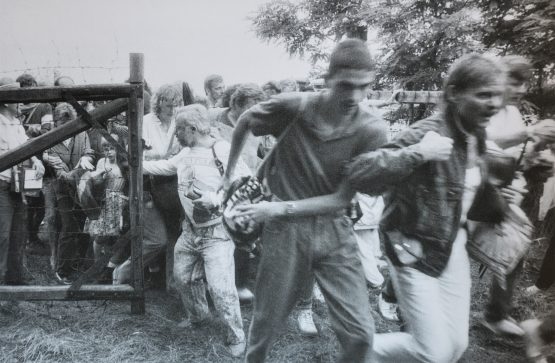
On our journey of discovery through Danube Europe, we will also find many sites of the horrors of the 20th century. Whether Mauthausen near Linz or the lesser known Star Fortress in Komárom, Hungary, which served as a collection camp for deportees from the Hungarian Roma population at the end of 1944. The objective reappraisal of history is still a challenge in most countries of the Danube region. The transformation was too rapid, too many are still directly affected, but party-political interests are also too strong. A little tip: Monuments and memorials reveal a lot about how the culture of remembrance is dealt with - a glance at the many different monuments in Budapest is enough to understand many a controversy.
Creativity, innovation and the questions of the future
The Danube is the only river in the world where the river kilometers are not counted from the source but from the mouth. That is why the zero-kilometer stone is not somewhere in the Black Forest, but on the Black Sea coast. The reason for this is that it was not possible to agree on a point in the headwaters. So they simply turned the Danube around. One always finds a solution: Is this the "Danubian" philosophy of life? The source of creativity and innovation in Danube Europe? Our expedition will show that this spirit of renewal can no longer mean a clichéd folklore of the smart and inventive Eastern European. The region is now a thriving land of cutting-edge technologies, startups and design studios, creative industries and inventions. Not only are new cars built in the Bratislava region, in Győr, Esztergom or Kecskemét, know-how also accumulates at the adjoining colleges and universities. Novi Sad is a center of the international gaming industry, a stronghold of computer science and contemporary arts.
New, creative venues have sprung up in many cities across the region, often from old industrial sites or other decaying buildings that have been repurposed for the purposes of art, culture, and education.
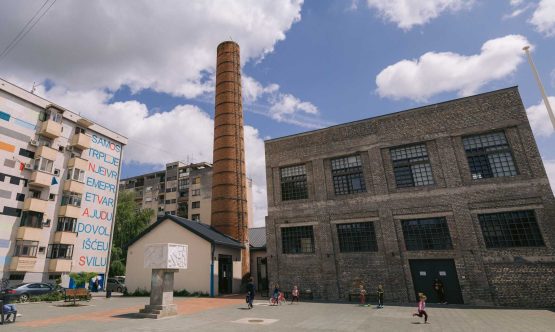
Pécs - Porcelain figures to kiss awake: The Zsolnay Cultural Quarter project is a beacon of the 2010 Capital of Culture year: the quarter was built on the site of the Zsolnay porcelain factory - founded by the great inventor Vilmos Zsolnay, who once supplied the entire monarchy. The new cultural center is a fairy-tale world of colorful gingerbread buildings, old chimneys and ceramic figures. The area houses a contemporary gallery, the university's art faculty, a puppet theater, a planetarium, a future museum for children and families, the Zsolnay Porcelain Museum and cafés.
Novi Sad - new bridges to Europe. The Danube bridges were bombed during the Kosovo war just 22 years ago, now Novi Sad is European Capital of Culture 2022 under the motto "For New Bridges". Novi Sad (Neoplanta, Újvidék, Neusatz) is proud of its multicultural tradition, but is also trying to reinvent itself. With the cultural centers "Svilara" (former silk factory) and "Egység" (former hunting club), new "cultural stations" have emerged. The so-called "China Quarter" impresses as a haven of alternative culture. It is a former industrial zone with small workshops and businesses: It is a place where you can feel the evergreen rock'n'roll spirit in the air.
Separate and yet connected - full of contradictions and secrets
The Danube itself has also sometimes been a border, sometimes a bridge. The linguistic-cultural heterogeneity, the constant movements and the disputes led to the Danube becoming both border and connection. This contradiction makes the other Europe on the Danube so exciting and sometimes mysterious. Even one and the same bridge could sometimes connect and sometimes separate entire systems, as can be seen impressively in the example of the Nibelungen Bridge in Linz.
Komárom/Komárno - The Danube divides, the Danube connects: The two small towns of Komárom and Komárno were once one city. The two parts of the city were connected in 1892 with the proud Elisabeth Bridge. The division of the city was a consequence of the 1920 Treaty of Versailles (the Trianon Treaty), and during communism the border was as closely guarded as the Iron Curtain in the West. The political upheaval in 1989 had already made it more permeable, and the accession of Slovakia and Hungary to the EU (2004) and the Schengen area (2007) marked a kind of "reunification" on a European scale.
Esztergom/Štúrovo - The river tells stories: The Marie-Valerie Bridge, which connects Esztergom with Štúrovo in Slovakia - Párkány in Hungarian - is also symbolic. The bridge, blown up in 1944, was rebuilt only in 2001. The former bridge keeper's house of Štúrovo is an international artists' residence. The Aquaphone Festival commemorates the people separated from each other - often relatives - who went to the Danube on windless evenings to talk to each other. The water carried their voices to the other bank. The small festival honors people's longing to talk to each other and their ingenuity to overcome borders and distances under difficult conditions.
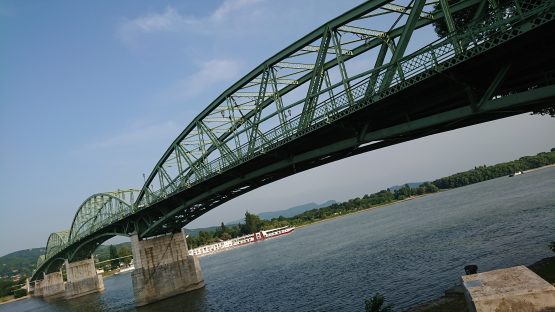
Unique worldwide - diversity of cultures and languages
The Danube is the only river in Europe (and the world) where such a dense diversity of ethnicities, cultures, languages, denominations and scripts coexist and live together. Thus, the Danube is uniquely representative of the much-quoted diversity of our continent. The countries have often had a difficult time with each other, they have been enemies many times, but they have always depended on each other. In the end, no power, no nation of them could permanently assert itself and rule alone for a long time. Despite all the strife, the identities, customs, dialects, food, etc. always merge, which underlines the great richness of the Danube region.
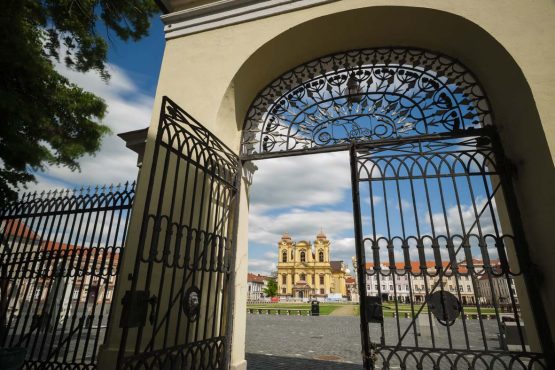
Bratislava - small-big Central Europe: The diversity of Bratislava (Pressburg/Pozsony/Prešporok) is being rediscovered today by its own inhabitants. The different layers of the city's history, the German-speaking, the Austrian or the Hungarian character are becoming more and more interesting. "Many realize" notes the author Michal Hvorecky, "that this is also us, that this is not a disadvantage but an advantage for us, that this is our heritage. Jewish heritage, too, since large parts of the city used to be Jewish. People ask themselves the question: which of these are we?" Accordingly, there are thematic city walks on offer.
Timişoara- Diversity moves into new light: The future European Capital of Culture 2023 is a place of multiethnicity and multilingualism. The Romanian, German and Hungarian theaters are a strong symbol of European coexistence in the Danube region. Timişoara (Timisoara, Temesvár) tells a contrasting European story, but currently also of an innovative cultural awakening. The Capital of Culture's motto "Light Up Your City!" recalls the city's pioneering role in technology (public electric lighting) and during the 1989 revolution - at the same time, it defines a new task for the future.
The numerous minorities never had an easy life along the Danube. Jewish culture was omnipresent in the Danube region, but the incipient flourishing of Judaism came to a particularly tragic end with World War II. Nevertheless, the preservation of Jewish traditions, and even the development of a new, active, self-confident Jewish life in cities like Vienna or Budapest, gives hope. The streetscape in Vienna's Leopoldstadt or the cultural-religious and culinary life in Budapest's Jewish Quarter provide good examples.
Coexistence with the various scattered groups of Roma and Sinti is also part of the Danube region. Their share of the population in Romania, Bulgaria, Serbia, Slovakia and Hungary is significant - but their participation in public life is low. The everyday life of many Roma families consists of poverty. For this very reason, it is important to notice those positive examples that are not only hopeful but can serve as a model - be it the Ghandi Gymnasium, a model school in Pécs, or the support programs of the famous musician Ferenc Snétberger.
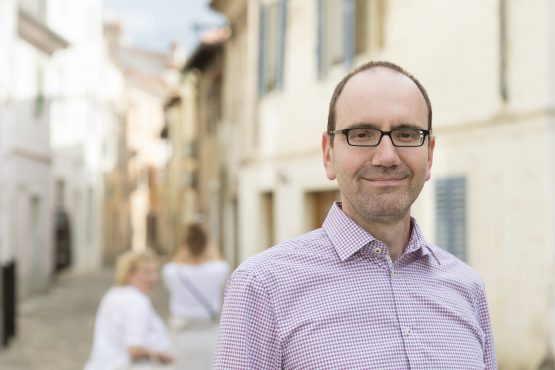
Text: Dr. Márton Méhes
Experienced international cultural manager, lecturer and consultant with proven experience in transnational and European cultural projects and in cooperation with organizations throughout the Danube region and Europe. Initiator and coordinator of the annual regional literary program "Danube Lounge" at the Buch Wien International Book Fair and Festival. Experienced in project management, strategic planning, cultural diplomacy, project proposals, intercultural cooperation, institutional administration and event management. Strong international and cultural affairs professional with a Doctor of Philosophy (PhD.) in Linguistics.
As part of the Interreg EU project "Transdanube Travel Stories ", a new thematic itinerary entitled "Europe on the Danube" has been created. It is one of six interconnected new narratives, with each route traveling a specific section of the Danube. "Europe on the Danube" focuses on the middle course of the river, with sites steeped in history, surprising connections and exciting attractions in eastern Austria, Slovakia, Hungary and northern Croatia, as well as glimpses of the European Capitals of Culture Novi Sad in Serbia and Timişoara in Romania.
You can read and find more information about the project and the full stories here:
https://www.interreg-danube.eu/approved-projects/transdanube-travel-stories
https://www.facebook.com/travelstoriesproject
https://www.linztourismus.at/freizeit/linz-entdecken/aktivitaeten/donau/transdanube-travel-stories/
